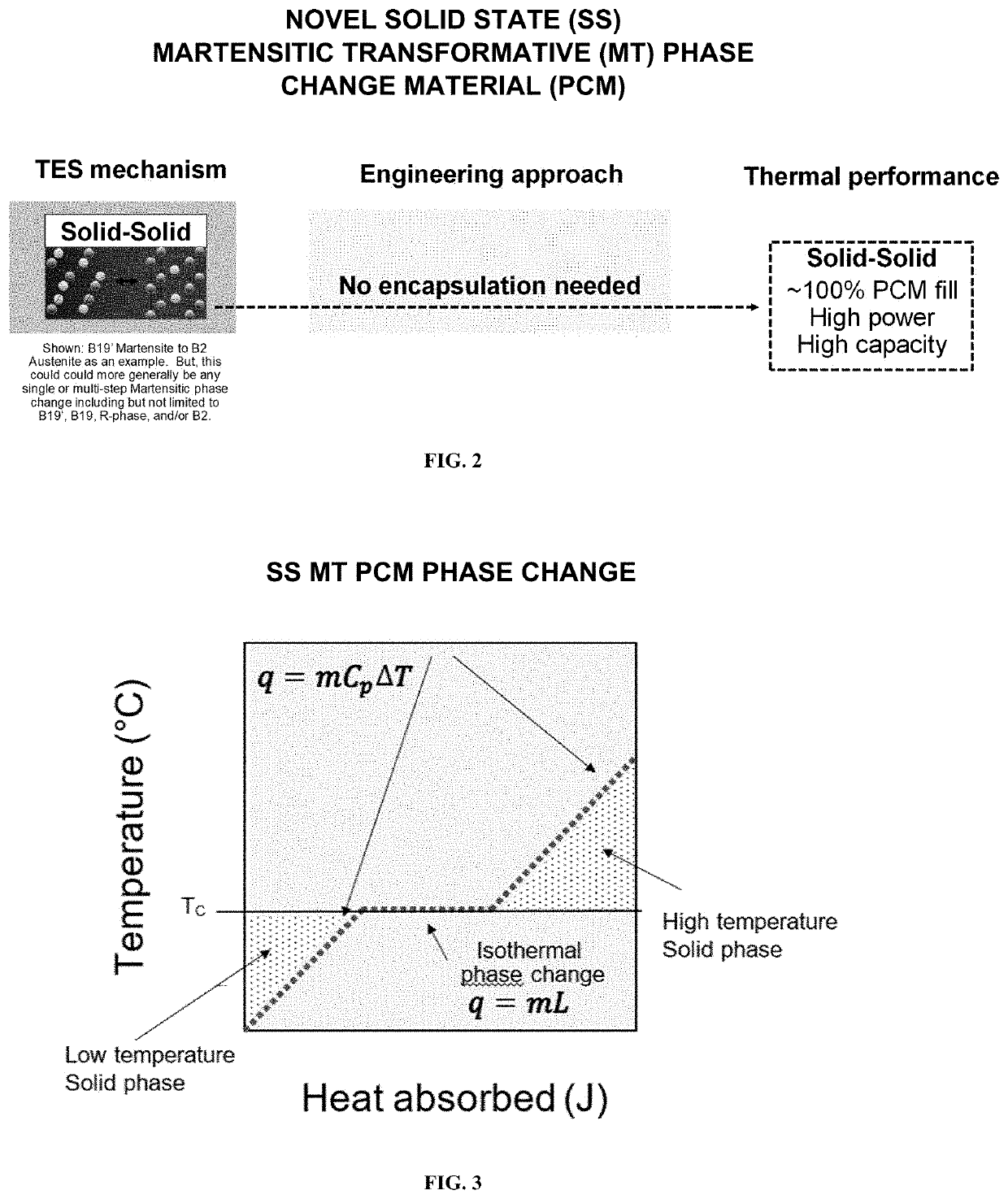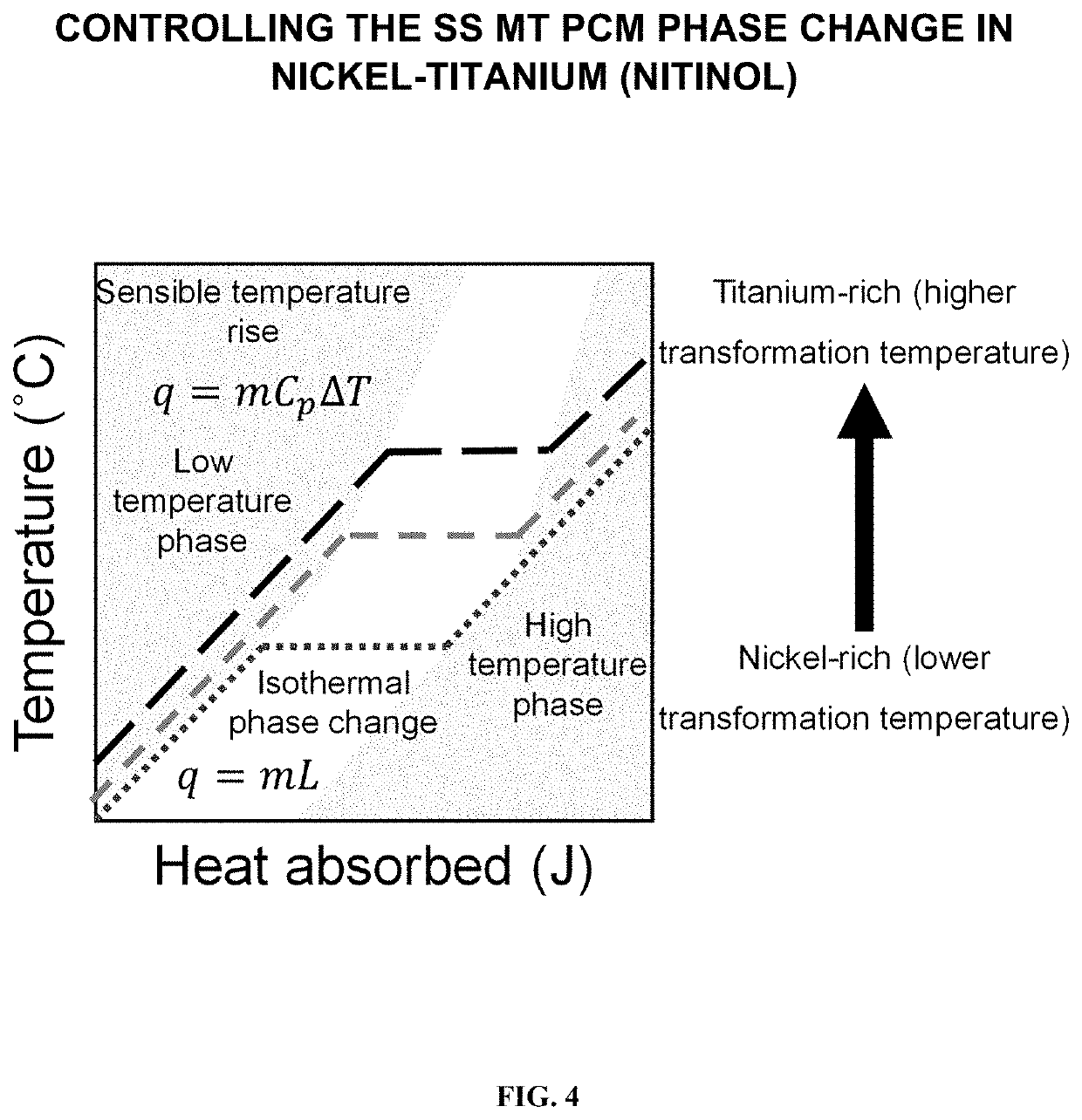SOLID STATE MARTENSITIC TRANSFORMATION PHASE CHANGE MATERIAL CO'qMPONENTS FOR THERMAL ENERGY STORAGE AND TRANSIENT HEAT TRANSFER SYSTEMS
a phase change, solid-state technology, applied in heat storage plants, lighting and heating apparatus, chemistry apparatus and processes, etc., can solve the problems of limiting adoption in aforementioned size and weight-limited applications, low storage capacity, and inability to use aluminum, etc., to achieve fast transformation times, low thermal hysteresis, and the effect of low cos
- Summary
- Abstract
- Description
- Claims
- Application Information
AI Technical Summary
Benefits of technology
Problems solved by technology
Method used
Image
Examples
Embodiment Construction
[0049]The embodiments herein provide solid-state thermal energy and heat transfer structures. Referring now to the drawings, and more particularly to FIGS. 1 through 19, where similar reference characters denote corresponding features consistently throughout the figures, there are shown preferred embodiments. In the drawings, the size and relative sizes of components, layers, and regions, etc. may be exaggerated for clarity.
[0050]In contrast to the known materials and techniques discussed above, FIG. 2 introduces the novel use of solid state (SS) Martensitic transformation (MT) phase change materials (PCM) according to embodiments of the present invention.
[0051]As used herein, “solid state (SS)” refers to a substance or material that remains a solid throughout normal and / or anticipated operating temperatures. And, “phase change material (PCM)” refers to a substrate or material that change phases in response to thermal input. Phase changes may include changes in matter states, such a...
PUM
| Property | Measurement | Unit |
|---|---|---|
| latent heat | aaaaa | aaaaa |
| thermal energy | aaaaa | aaaaa |
| temperature | aaaaa | aaaaa |
Abstract
Description
Claims
Application Information
 Login to View More
Login to View More - R&D
- Intellectual Property
- Life Sciences
- Materials
- Tech Scout
- Unparalleled Data Quality
- Higher Quality Content
- 60% Fewer Hallucinations
Browse by: Latest US Patents, China's latest patents, Technical Efficacy Thesaurus, Application Domain, Technology Topic, Popular Technical Reports.
© 2025 PatSnap. All rights reserved.Legal|Privacy policy|Modern Slavery Act Transparency Statement|Sitemap|About US| Contact US: help@patsnap.com



